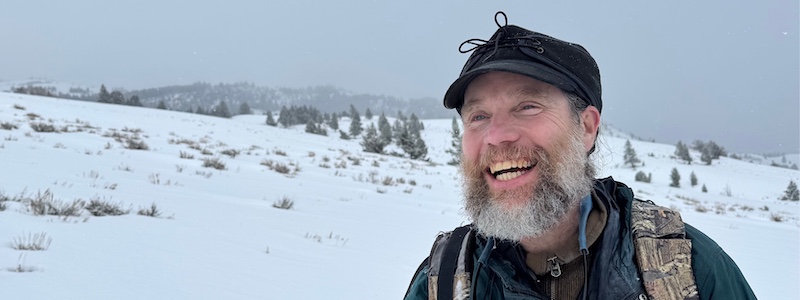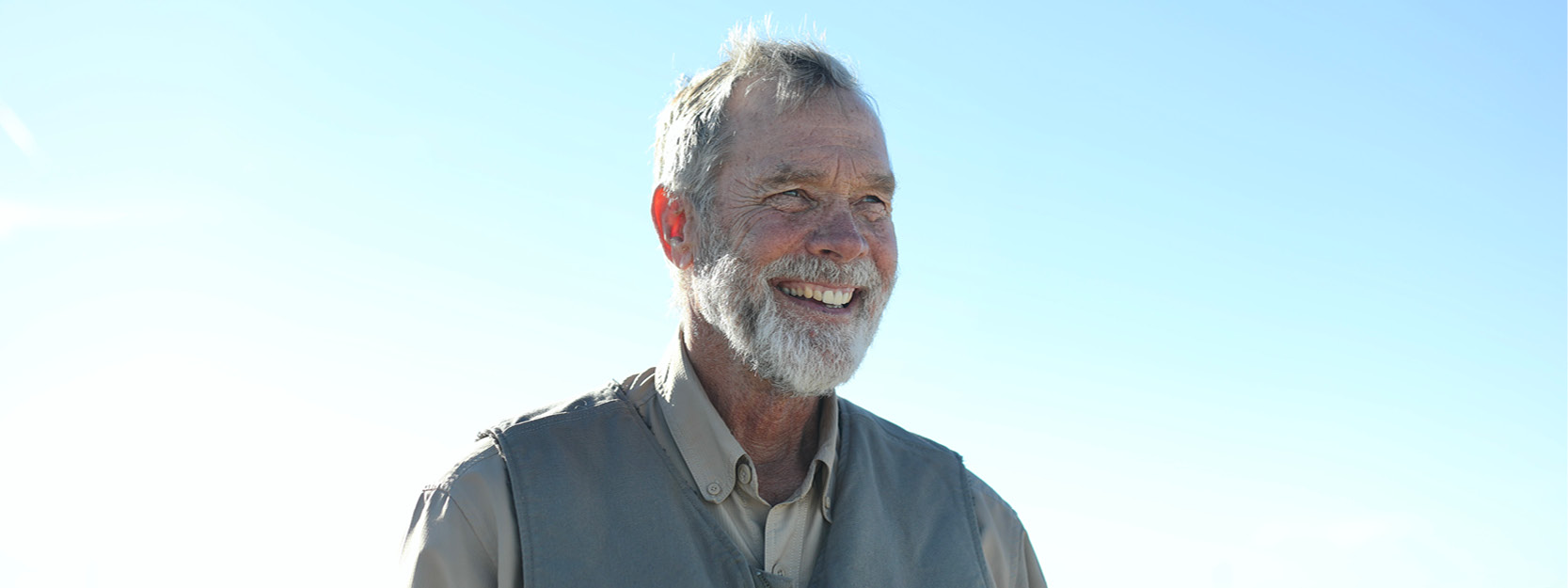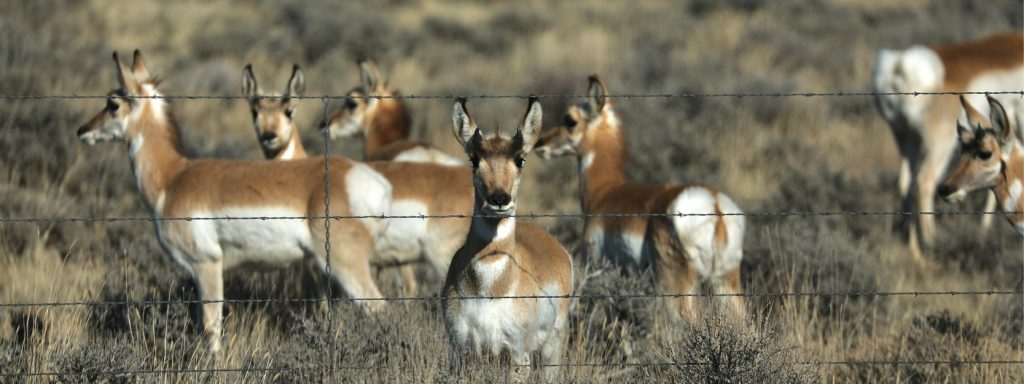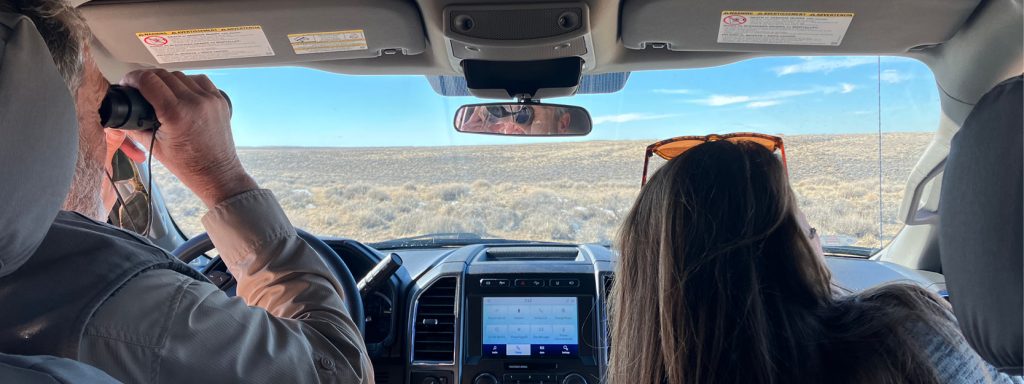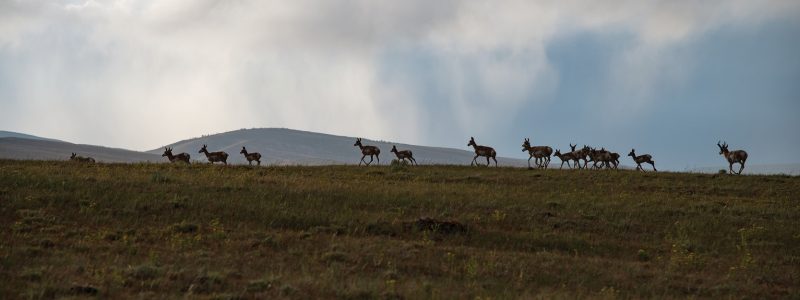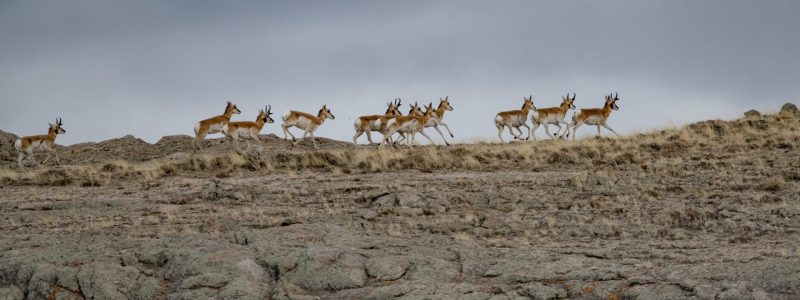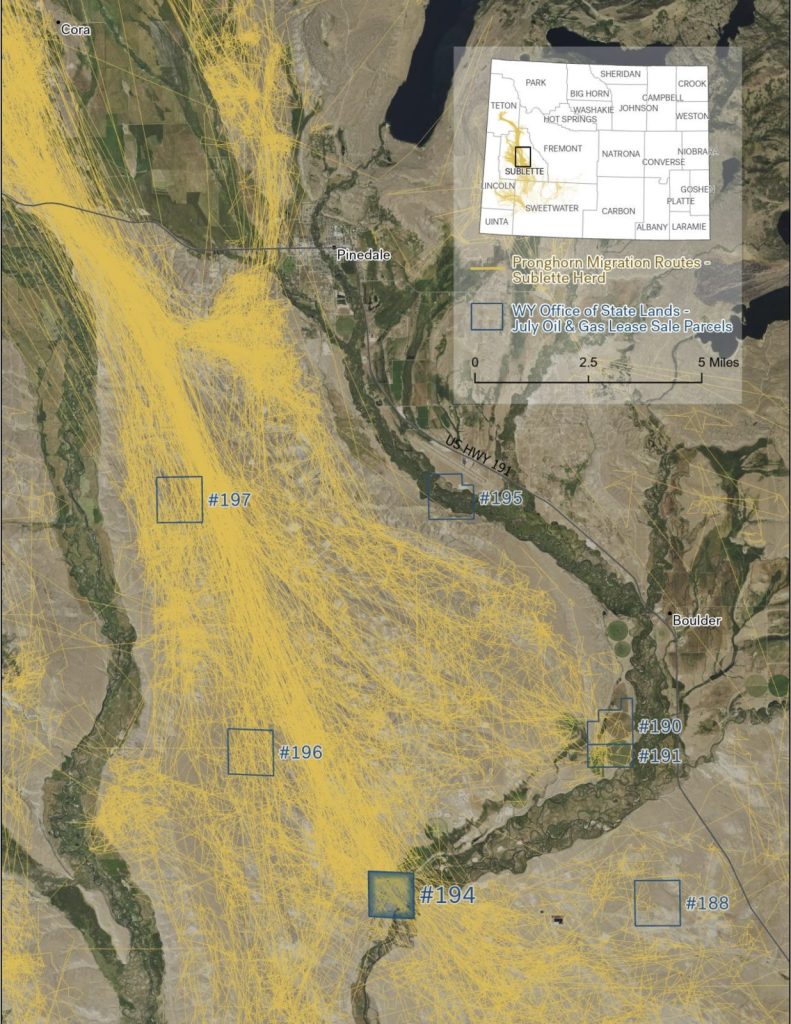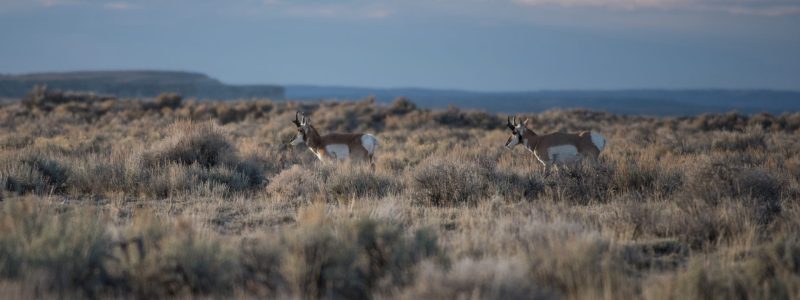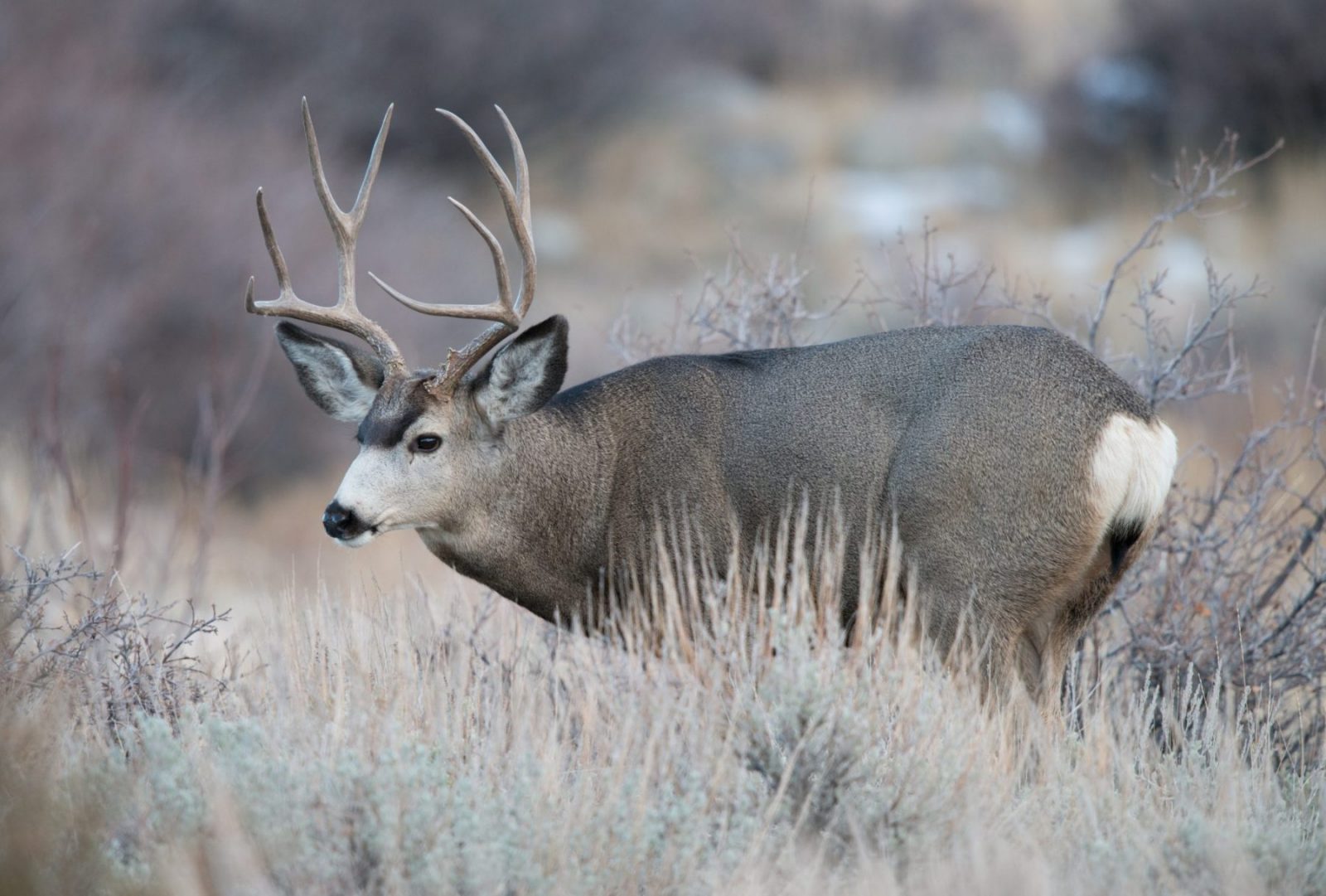A conversation with Jackson naturalist Kevin Taylor, pondering pronghorn in Jackson Hole, ‘nature inheritance,’ and hope for the next generation
Twice a year, Sublette Pronghorn embark on one of the longest land migrations in the lower 48 states — an epic journey stretching 165 miles from I-80 to Grand Teton National Park. Their ancient migration pathways crisscross highways and meander through ranches, communities, and the backyards of people who call this part of Wyoming home.
Kevin Taylor of Jackson is one such person. Kevin moved to Jackson over 20 years ago as a naturalist and guide in the ecotourism industry. He has spent years observing wildlife and studying the ecology of the Greater Yellowstone Ecosystem, devoting time and effort to understanding and appreciating the place he lives and the animals that also call it home.
As a continuation of our series on people connected to this magnificent migration, Kevin was kind enough to share his story with us on a visit to where the Gros Ventre River flows out of the mountains north of Kelly, Wyoming. Like the river, pronghorn stream out of the Gros Ventre range and into Jackson Hole, following the path of least resistance at the end of their spring migration in May.
It was March, and snow was falling with increasing intensity as Kevin and I drove north. Though we walked just off the road for our conversation, we donned snowshoes to avoid sinking to our knees, and only the tips of the tallest sagebrush and bitterbrush were exposed above the snow. Overlooking the river with the Tetons in the distance, there were no pronghorn to be found. The Sublette Pronghorn herd will be here in a few short months, however, passing by on their way to the greener pastures of their summer range in Grand Teton National Park.
This interview has been edited for clarity and brevity.
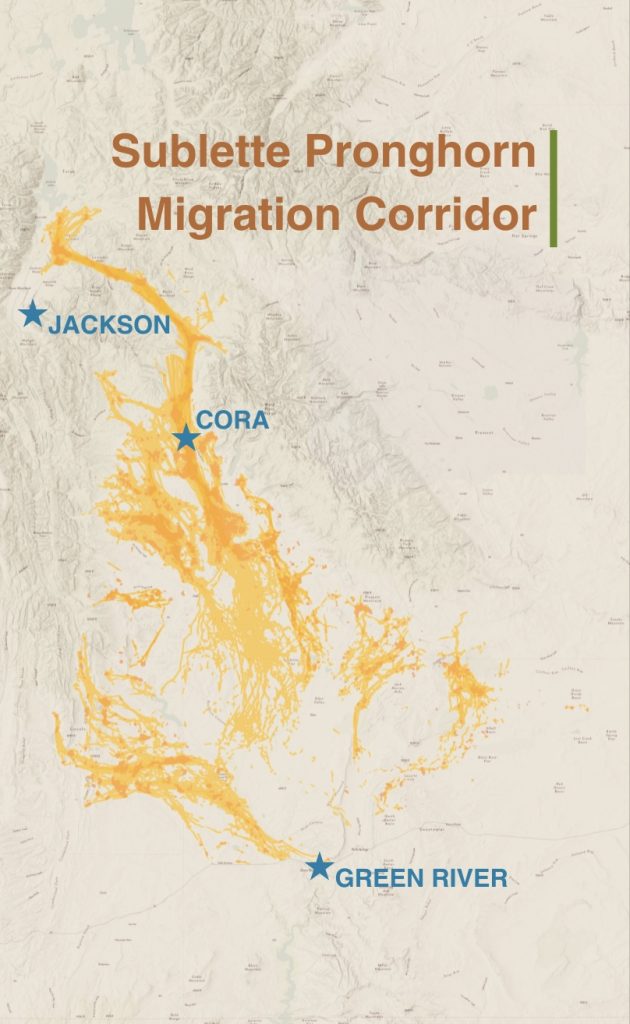
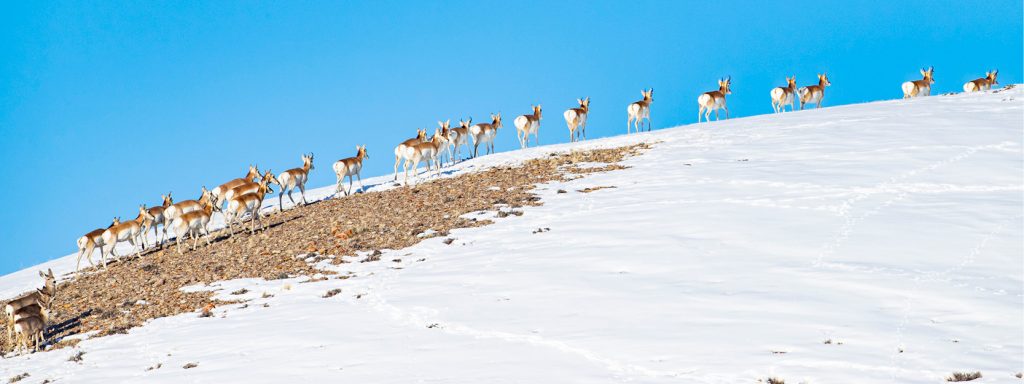
WOC: Can you share a bit about your background in the area and your profession?
Kevin: In the late 1990s, I worked on a master’s degree at the University of Wyoming in Laramie. Right after I finished my master’s, I met my wife, and I was offered a position in Jackson Hole in ecotourism to guide educational programs in Grand Teton and Yellowstone National Parks.
If you twisted my arm and asked for my specialty, it would actually be botany. I have a master’s in botany from the University of Wyoming. One of the things that keeps me from going on to a Ph.D. are [my interests] in so many different facets of the Greater Yellowstone Ecosystem. I see my niche as a generalist … to bridge the gap between science and primary literature and the public.
WOC: How has your career as a wildlife guide and naturalist influenced how you see pronghorn antelope?
Kevin: Personally, I really enjoy teaching people about pronghorn in Grand Teton National Park … I want people to be amazed by this place. I want people to be inspired so that then they can take that inspiration home with them and get excited about getting to know their [own] places, spending more time outside, and developing a deeper relationship with home. Pronghorn are a great avenue to amaze and inspire people.
WOC: What stands out to people when you’re viewing pronghorn with them?
Kevin: In places outside of Wyoming, we teach about animals when we find an antler, a rub on a tree, or a track. I think what’s so remarkable about this area is that we can teach about these animals as we’re watching them. Viewing or finding pronghorn is not real difficult because they’re active all day long. All of the animal species that were here prior to settlement are still here, and that’s really remarkable. There are not a lot of places in the lower 48 that can say that. To be able to talk about these amazing aspects of pronghorn anatomy, physiology, and history while watching them behave is really amazing for visitors.
[The movements of wildlife in the valley] are a part of how we mark our calendars. Wildlife watching is such an important part of the culture here and the timing of when animals do what they do, when they migrate, when they return, when they’re breeding, when they’re having their young — it’s what we talk about. When you look at the local newspaper here, the Jackson Hole News & Guide, we open the paper and either on the front page or the second page, there’s almost always a wildlife-related article. When people get off the airplane and they walk towards the gate to come into the airport, they walk through an antler arch. There’s these elk antler arches on each of the four corners of the town square. To me, that’s so symbolic of how important wildlife is to Jackson Hole, to the Greater Yellowstone Ecosystem and, of course, to the culture of Wyoming.
I think what’s so remarkable about this area is that we can teach about these animals as we’re watching them. Viewing or finding pronghorn is not real difficult because they’re active all day long. All of the animal species that were here prior to settlement are still here, and that’s really remarkable. There are not a lot of places in the lower 48 that can say that. To be able to talk about these amazing aspects of pronghorn anatomy, physiology, and history while watching them behave is really amazing for visitors.
— Kevin Taylor
WOC: Why is wildlife important to you specifically?
Kevin: When I think of the top five reasons why I have lived the second half of my life in Wyoming, one of those, without question, is wildlife. It’s the fact that all the wildlife species that were here prior to settlement are still here. I also hunt … that can be a real foreign concept that you can actually love an animal and hunt it. [Hunting] is such a big part of my relationship with this landscape. I very much like and ‘live’ the idea of participating in nature. So not just watching it — not just observing it — but also participating in it.
I grew up in the suburbs of Chicago, where meat came from a styrofoam container. For me to have the opportunity to show and to model to my daughter where our food comes from is very significant. If you are what you eat, my daughter and my family are partially elk. To say that eating that meat all year is important is an understatement. It’s sacred — it’s just a part of who we are and what we do. We all know that hunting is such an important part of Wyoming culture, and I hope it never, ever goes away.
WOC: Why does the Sublette Pronghorn migration corridor matter?
Kevin: Let’s [take] a hummingbird. You know, we can do a wonderful job of protecting hummingbird habitat here and [a wonderful job of protecting their habitat] in South American countries where they winter. But it’s all for naught if we don’t protect the travel corridor along the way.
We can easily apply that to pronghorn as well. The Greater Yellowstone Ecosystem has incredible wildlife habitat — a lot of very intact habitat. The Red Desert has incredible habitat down there, but if we don’t protect that corridor in between, it’s all for naught. For me, there’s a lot of things that we can’t control. Here in Wyoming, [we can’t control] harsh weather, like [what we saw] two winters ago when so many pronghorn died across the state. We have a hard time controlling disease, too. That can come about in animals, which was also an issue two years ago. I am a big fan of controlling the things we can control, and we have the ability to protect this pathway so that my daughter’s kids … can anticipate pronghorn [moving through this area]. We have control of being able to make that decision.
I am a big fan of controlling the things we can control, and we have the ability to protect this pathway so that my daughter’s kids … can anticipate pronghorn [moving through this area]. We have control of being able to make that decision.
— Kevin Taylor
WOC: What are your hopes for the future when it comes to the ability of animals like Sublette Pronghorn to migrate from I-80 to Grand Teton National Park?
Kevin: About 25 years ago, I remember driving behind an RV, and on the back of the RV there was a bumper sticker that read: “We are out spending our kids’ inheritance.” I remember thinking hard about that, and I sort of changed the context of the bumper sticker. When the bumper sticker said ‘inheritance,’ I thought about the idea of ‘nature inheritance.’ We are out spending our kids’ ‘nature inheritance.’ That’s something I’ve held on to ever since.
My hope is that my great, great granddaughter can stand [here] and in early May, she may see pronghorn migrating … coming back out of the Gros Ventre River [drainage] and into Jackson Hole to spend the summer. To me, that’s a symbol of the idea of ‘looking bigger’ and thinking about the legacy we leave behind. It’s that idea of ‘nature inheritance.’
When I became a father, almost 19 years ago now, I signed up for hope. I get choked up — what greater symbol of hope is there than bringing children into the world? [I hope] we use our ability to make decisions to pass on our ‘nature inheritance’ to our kids, [which means doing] things like setting aside the Path of the Pronghorn.
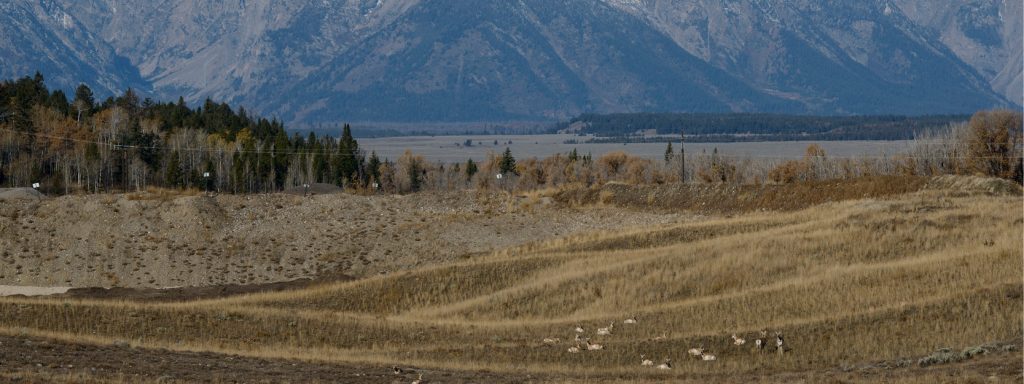
From Green River to Cora to Jackson, our Pronghorn & People series features the stories of folks who share their backyards with migrating Sublette Pronghorn — and who are hopeful this migration receives the protection it needs to endure.
Keep an eye on our blog for more. In the meantime, learn more about this migration corridor and how you can help protect these incredible animals on our Sublette Pronghorn page.

